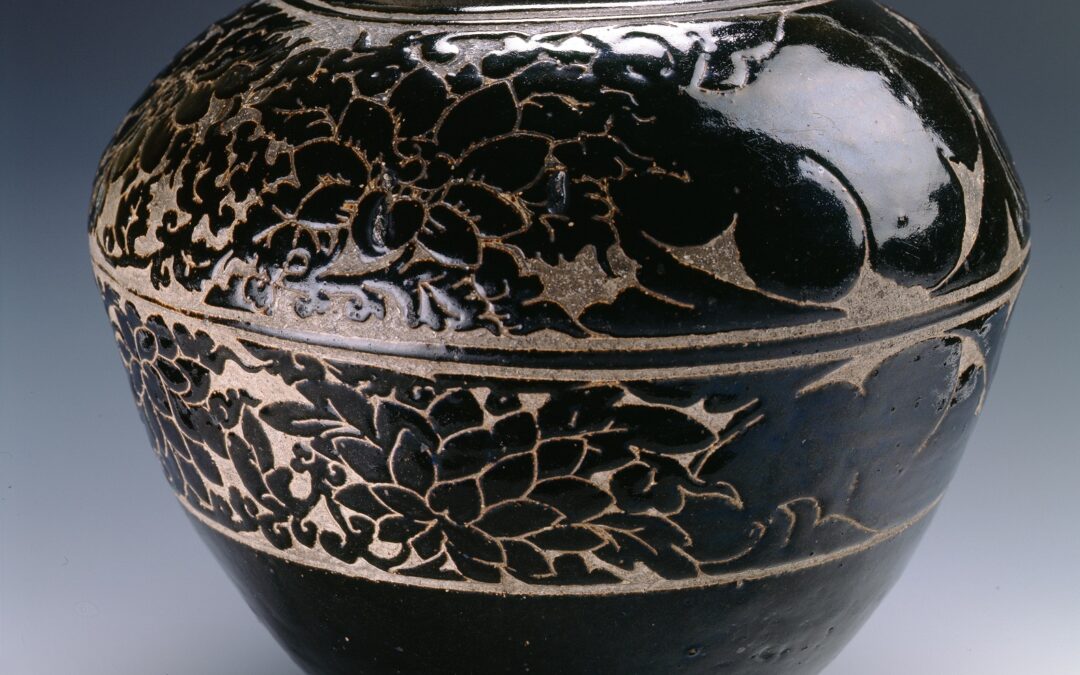
by NRF Media | Apr 11, 2024
This set of porcelain is one of the largest and most complete in the Rough Point collection, and was originally owned by James and Nanaline Duke.
In the West, fancy place settings, tea cups, or other formal dining and imbibing objects are often referred to as “China”—even if these objects were not made in China (as is the case of this porcelain ware). Chinese porcelain was so ubiquitous—and so desirable—that all porcelain came to be known by this name. Until the mid-18th century, the process of making porcelain ware that was delicate and elegant—but strong enough to hold boiling hot tea and coffee—was a mystery to Westerners. Many of the patterns on the porcelain owned by the Duke family are inspired by Chinese decorative motifs and the Chinese blue-and-white style.

by nrf@admin | Jan 3, 2024
The surfaces of these candlesticks resemble miniature stained glass windows. Chinese artisans perfected the art of cloisonné over centuries. Each different color on the candlestick is a piece of enameled glass, separated by bronze or copper wires, and then adhered to a metal base. Because of their vibrant forms and the skill necessary to create them, objects like these were considered to be luxurious and were placed prominently on display in a home. Later European and American collectors also valued Chinese cloisonné decorative arts for similar reasons.
Doris purchased this pair in 1975.

by nrf@admin | Jan 3, 2024
This Cizhou jar was made by Chinese artisans, likely during the Yuan dynasty, and was a marvel of technological innovation at the time of its creation. Cizhouware refers to ceramics made in a series of kilns in Northern China that, beginning in 925, produced high-quality and utilitarian pieces with decorative designs. The process for making this jar, for example, includes an overglaze and an underglaze, and incised and carved designs.
A jar like this would have belonged to wealthy — but not imperial —Chinese households and although it is decorative, it would have had a very practical purpose as an object for storage.
As it is very different from her typical collecting of Ming or Qing Dynasty ceramics, we don’t know what exactly drew Doris to this jar — it may be the object’s age, it may be its design, or it may be its story. Doris purchased it at the auction of the estate of Mrs. Seton Porter, formally Fredericka Berwind, in 1955.

by nrf@admin | Jan 3, 2024
These decorative jars feature botanical motifs in pink hues known as famille rose — which is a French term that translates to “in the pink family.” These famille rose jars are examples of the 18th-century ceramics purchased by James and Nanaline Duke and originally displayed in the Duke family residence at the corner of 78th Street and 5th Avenue in New York City.
Chinese artisans created these jars specifically for the export market. Everything about them was designed to appeal to Western taste — from the elegant curved shape of the form to the blossoms and bird motifs featured in vivid pink hues.

by nrf@admin | Jan 3, 2024
Doris Duke purchased this pair of earthenware fruit baskets, which include lizards, frogs, and insects in their decoration, in 1960. She likely thought they were the work of the renowned della Robbia workshop, and placed them alongside other earthernware works. However, recent conservation work has revealed that these pieces are likely made in the style of della Robbia.





